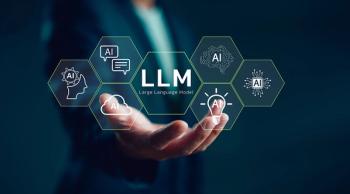
Pharmaceutical Technology Europe
- Pharmaceutical Technology Europe-10-01-2007
- Volume 19
- Issue 10
Packaging trends
Security, the environment, ageing populations, the bio-boom and cost control are just a few of the drivers that will influence pharmaceutical packaging for the remainder of this decade.
From now until the end of the decade and beyond, pharmaceutical packaging will be affected by seven trends:
- Widespread counterfeiting and diversion.
- Increased environmental consciousness.
- Growth in biotechnology products.
- Influential retailers.
- Ageing populations in developed countries.
- Increased access to healthcare in developing economies.
- The constant need for cost control to preserve margins and keep medication affordable.
To adapt successfully, packaging professionals in the pharmaceutical industry must be prepared to adopt technology to track and protect products moving through the supply chain, leave a smaller environmental footprint, improve stability-enhancing packaging, expedite the package-design process, enhance senior-friendly and compliance features, boost packaging-line flexibility, reduce costs, and increase efficiency.
Track and trace
Radio-frequency identification (RFID) tagging to simplify shipping, receiving, inventory location and control has been mandated by the Department of Defense, Wal-Mart stores (Bentonville, AR, USA,
RFID will be impossible for packaging professionals in the pharmaceutical industry to avoid because it can also carry and collect the data needed to track and trace product through the supply chain, prevent counterfeiting and diversion, and meet pedigree requirements.
Technological developments should make it possible to install economical, multifrequency readers before the end of the decade. This will end the debate about which frequency is best for pharmaceutical applications and eliminate the need to standardize on either ultrahigh or high frequency industry-wide, thus allowing each company to adopt the frequency best suited to its operation.
RFID tags can also be coupled with sensors to monitor conditions during shipping and storage, and provide alerts if parameters are exceeded. Dual-function tags that couple RFID with temperature sensing are already available and cost significantly less than traditional devices for temperature monitoring. One example integrates a sensor, microchip, battery and antenna on a paper-thin label. It operates at 13.56 MHz ("TempSens" smart label; KSW-Microtec, Germany,
Another application for RFID is to monitor patient compliance. Tagged blisters record when doses are taken ("Med-ic" electrical compliance monitor; Information Mediary Corp., Ottawa, ON, Canada,
Environmental footprint
As the pendulum swings toward higher environmental consciousness, sustainability will be the theme song no one will be able to get out of his or her head. Sustainability embraces not only the recycling and waste-reduction imperatives of the last environmental era, but also the sourcing of renewable materials and minimizing greenhouse-gas generation, water use and energy consumption.
Wal-Mart, one of the driving forces behind RFID implementation, has also embraced sustainability. President and CEO Lee Scott announced the company's "Sustainability 360" programme in February 2007 during a keynote address at the "Business and the Environment Programme" hosted biennially in London (UK) by His Royal Highness the Prince of Wales. Wal-Mart's initiative relies heavily on suppliers, as well as customers, communities and employees. "It is the responsibility of every corporation to be more sustainable," said Scott.
The all-encompassing programme sets high expectations for suppliers, who are required to participate in the retailer's "Packaging Scorecard" rating system. The system compares packaging in each product segment according to greenhouse-gas generation per ton of production, product–package ratio, cube utilization, recycled content, recovery value and design innovation. The ratings will help identify best practices, enable the sourcing of products with the most environmentally benign packaging, and achieve the retailer's goal of a 5% reduction in overall packaging by 2013. "The impact of this packaging effort will be equal to removing 213000 trucks from the road and saving about 324000 tons of coal and 67 million gallons of diesel fuel per year," said Scott. "This is great for the environment. But there's also a business advantage — and a pretty big one. We believe this effort could save the global supply chain nearly $11 billion (€7.9 billion). Our supply chain alone could save $3.4 billion (€2.5 billion)."
The Sustainability 360 programme also includes an ethical-sourcing initiative that calls on suppliers to reduce their own environmental footprint. The retailer has already dedicated 200 workers to monitoring ethical sourcing and has begun auditing suppliers' performances related to activities such as processing, recycling and disposing of solid waste. The company makes recommendations for improvement and reviews progress.
Another new programme, "Global Innovation Projects," will encourage suppliers to reduce their dependence on nonrenewable energy in making their products.
Stability protection
As the number of relatively delicate biotechnology-based products expands, the demand for barrier packaging, seal-integrity test equipment, insulated distribution packaging and cold chain monitoring tools will grow. With some products costing thousands of dollars per dose, companies have little room for error in packaging, transportation and storage. Proper handling can be especially challenging in developing countries where refrigeration may not be readily available.
Easier packaging
The need for senior-friendly packaging has been discussed for decades. Unfortunately, senior-friendly products often are not child-resistant, so some seniors ask younger neighbours to come over when they need to open a medicine bottle. Now that the over-85 age group is the most rapidly growing segment of the population in many developed countries, and members of the baby-boom generation are reaching their sixties (an age when many people begin taking multiple prescriptions each day to treat chronic conditions), it's time to bring new senior-friendly solutions to market. Companies should also design packaging with better compliance aids to help people take their medication correctly, particularly when they are managing more than one prescription.
Improvements in senior-friendly and compliance packaging will also benefit all consumers.
The bottom line
Because cost-control directly affects the bottom line, it is essential for any successful company. It is especially important for organizations that make substantial investments in R&D and are in highly regulated industries in which compliance consumes a significant number of resources.
Typical cost-control measures include careful specification and sourcing of packaging materials, and may encompass strategies such as downgauging or lightweighting materials, standardizing sizes, and minimizing the number of variations.
When sourcing equipment for the packaging line, companies should carefully consider machine efficiency, labour requirements and changeover time. In fact, attention to changeover can pay off quickly, because downtime costs can easily add up to thousands of dollars per hour. Major time savers include servo motors, drives and controls that automate physical adjustments, toolless adjustments and part-changes, quick-connect–disconnect hardware, and clean-in-place equipment (although the latter may not be applicable for solid dosage forms).
Other strategies include standardizing changeover procedures, storing change parts in order of use on dedicated change-part carts, colour-coding change parts, and equipping anything measurable with a scale so settings are repeatable. On higher-speed lines, it can be helpful to incorporate features such as redundant labelling heads to quickly replace an empty label roll. The unit simply switches to the second labelling head, and the empty head can be refilled while the line is running. An enlarged carton magazine provides a similar benefit by reducing the number of times the operator must refill it.
Robots (and robot-like devices) also increase flexibility of packaging equipment, thus reducing changeover to a push of a button to change the recipe. More complex changeovers may necessitate the replacement of one end-effector with another, but it may be possible for the robot to perform this activity without any physical intervention from the operator. Even if the operator must assist, the tooling change is not likely to require more than a few minutes.
Sustainability is ...
If 10 people are asked to define sustainability, chances are the question will elicit 10 different responses. From a packaging perspective, one of the definitions comes from the Sustainable Packaging Coalition ([SPC], Charlottesville, VA, USA,
According to SPC, sustainable packaging:
- Is beneficial, safe, and healthy for individuals and communities throughout its life cycle.
- Meets market criteria for performance and cost.
- Is sourced, manufactured, transported and recycled using renewable energy.
- Maximizes the use of renewable or recycled source materials.
- Is manufactured using clean production technologies and best practices.
- Is made from materials that are healthy in all probable end-of-life scenarios.
- Is physically designed to optimize materials and energy.
- Is effectively recovered and used in biological or industrial cradle-to-cradle cycles.
The Sustainable Packaging Task Group, established in January 2007 by the Institute of Packaging Professionals (Naperville, IL, USA,
Hallie Forcinio is Pharmaceutical Technology's Packaging Forum Editor (Cleveland, OH, USA).
This article was first published in Pharmaceutical Technology, 31(3), 44â48 (2007).
Articles in this issue
about 18 years ago
Making light work of digital imagingabout 18 years ago
Optimizing resources and minimizing riskabout 18 years ago
The changing fortunes of APIsabout 18 years ago
The future is pharmacogenomicabout 18 years ago
Safety Firstabout 18 years ago
Growing the UK's bio cultureabout 18 years ago
Avoiding pitfalls in scaling up biopharmaceutical productionabout 18 years ago
Quick API deliveryabout 18 years ago
Calorimetry — the fully scalable PAT toolNewsletter
Get the essential updates shaping the future of pharma manufacturing and compliance—subscribe today to Pharmaceutical Technology and never miss a breakthrough.





